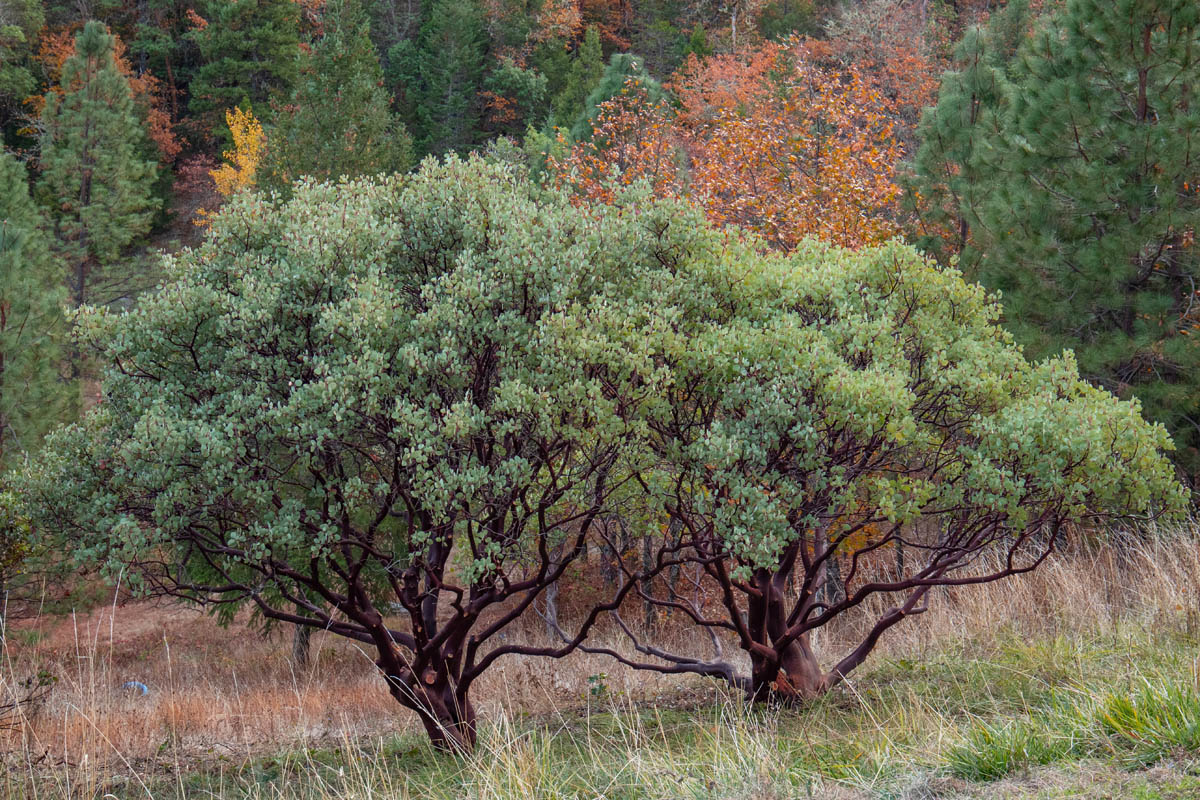Pruning, consulting and fine-tuning at a Rogue Valley landscape || M. D. Vaden
This is a large landscape in the Rogue Valley where I started work on a few changes October, 2018. It involves some facets of work I haven't promoted for a good number of years. I am not responsible for this entire landscape maintenance like mowing. My work will involve pruning, consulting and fine-tuning parts of the landscaping. I thought this place would be a good addition on the website to share and explain a few changes and the reasons.
Let me start with the entry and driveway which has arbors and Wisteria on both sides. Keep scrolling down for more.
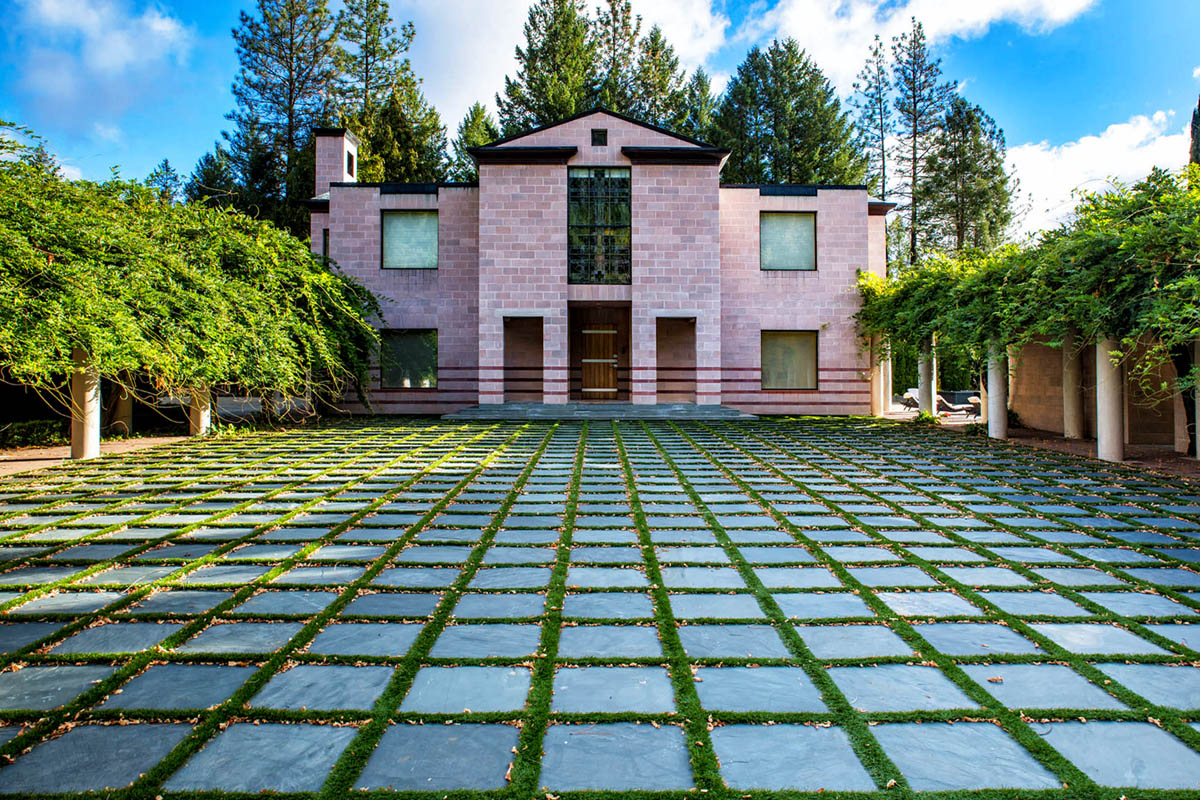
A textbook pruning should be like grape vineyards where vines are cut back to bare-bones and some spurs, but this homeowner enjoys the arbor wood mostly covered. So I increased air circulation, headroom and mountain views again, but kept plenty of meat on the bones per request. More can be done in winter after the foliage falls. These large older Wisteria vines show sunburn damage on most of the trunks. That means somebody topped them too hard years ago, probably in the growing season. To avoid further damage, I will prune these incrementally.
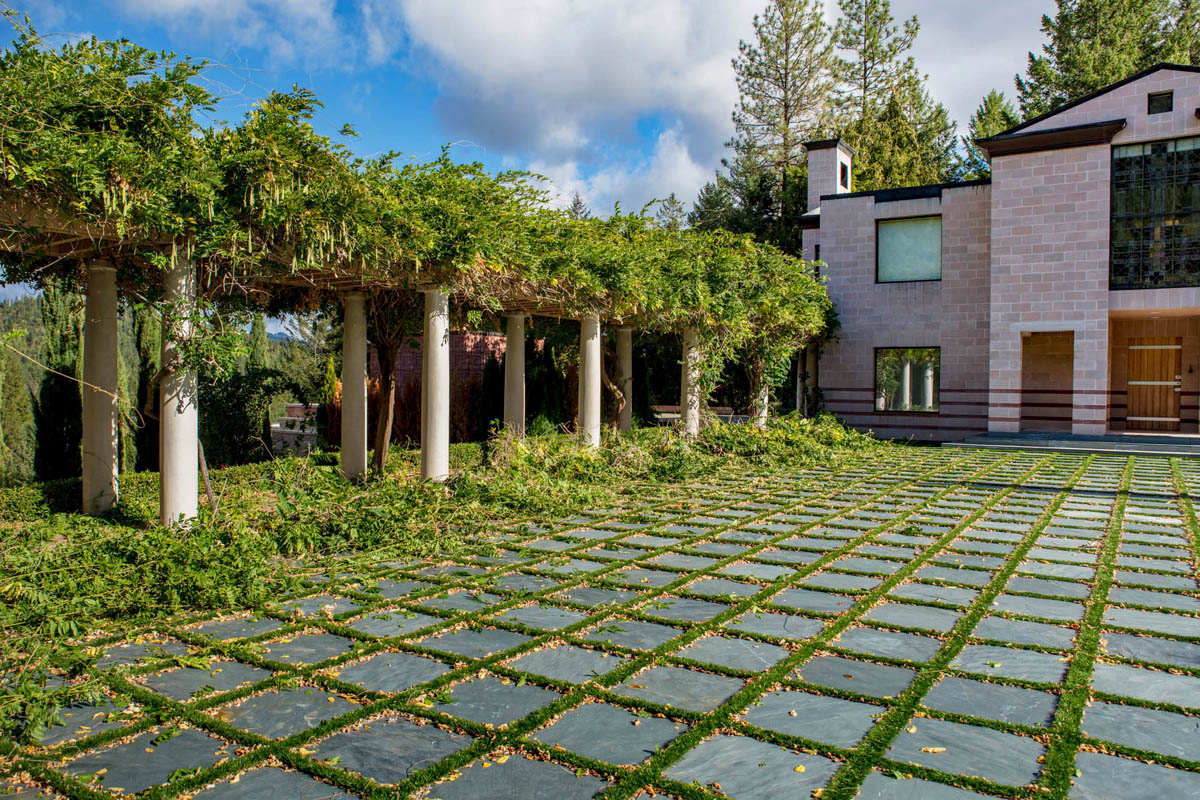
This is a broad view of the property. The entry above is in the top right corner. Proper pruning of trees and shrubs is as important here as any other landscape for plant health. But visually, the lines and shapes of the boxwood hedges can make or break the appearance of this place. I will add a closer view photo below, and explain more.
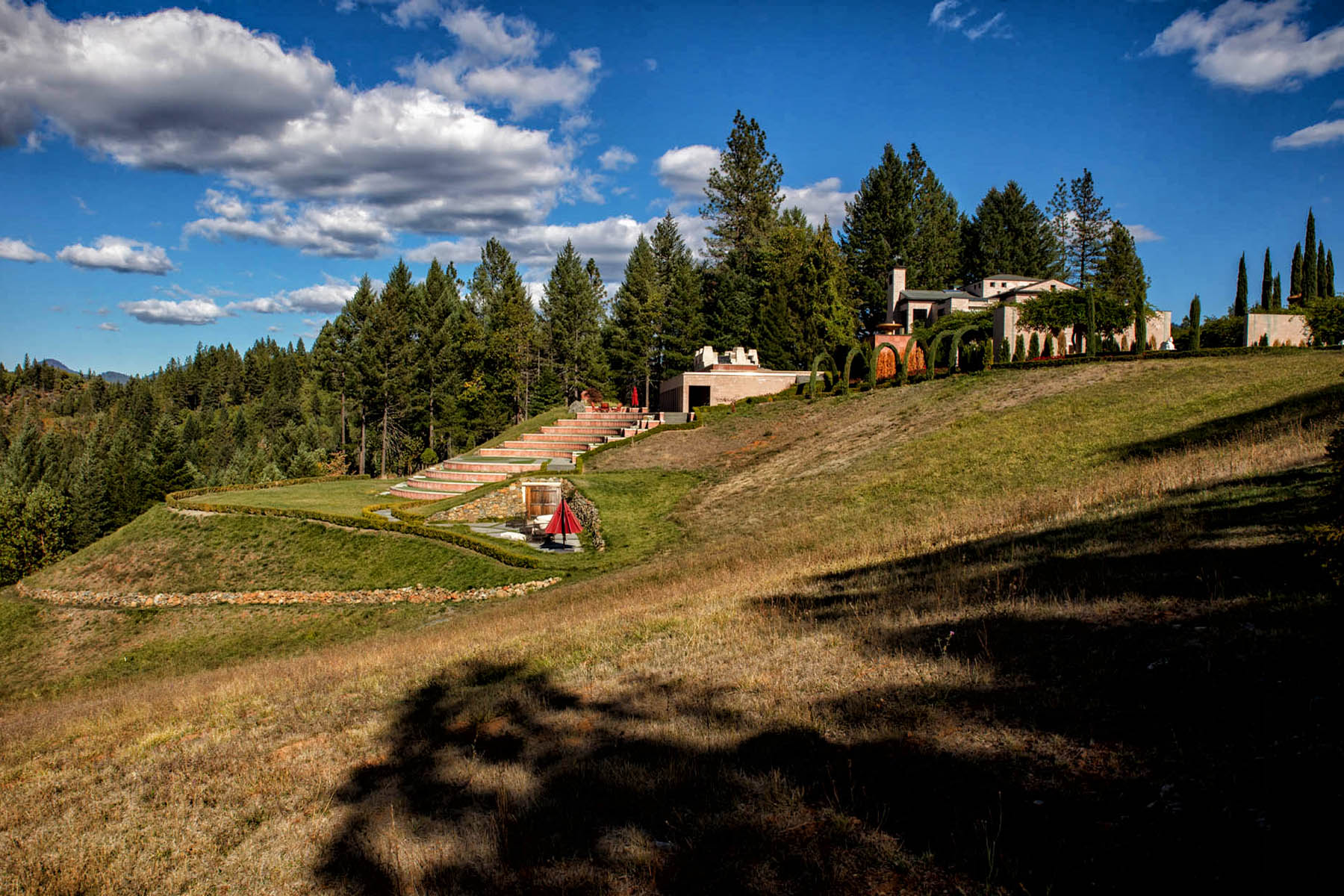
The first day I arrived was hazy, but here is a zoom shot near the amphitheater. The hedge's top undulates because whoever sheared previously followed the ground. That is not the solution for a place like this because of variation of grade. The hedge's top must remain straight and consistent, independent of the ground. This area will take two growing seasons to correct. The high parts can't be taken down too much because leaves make food, and this hedge needs all the food it can produce.
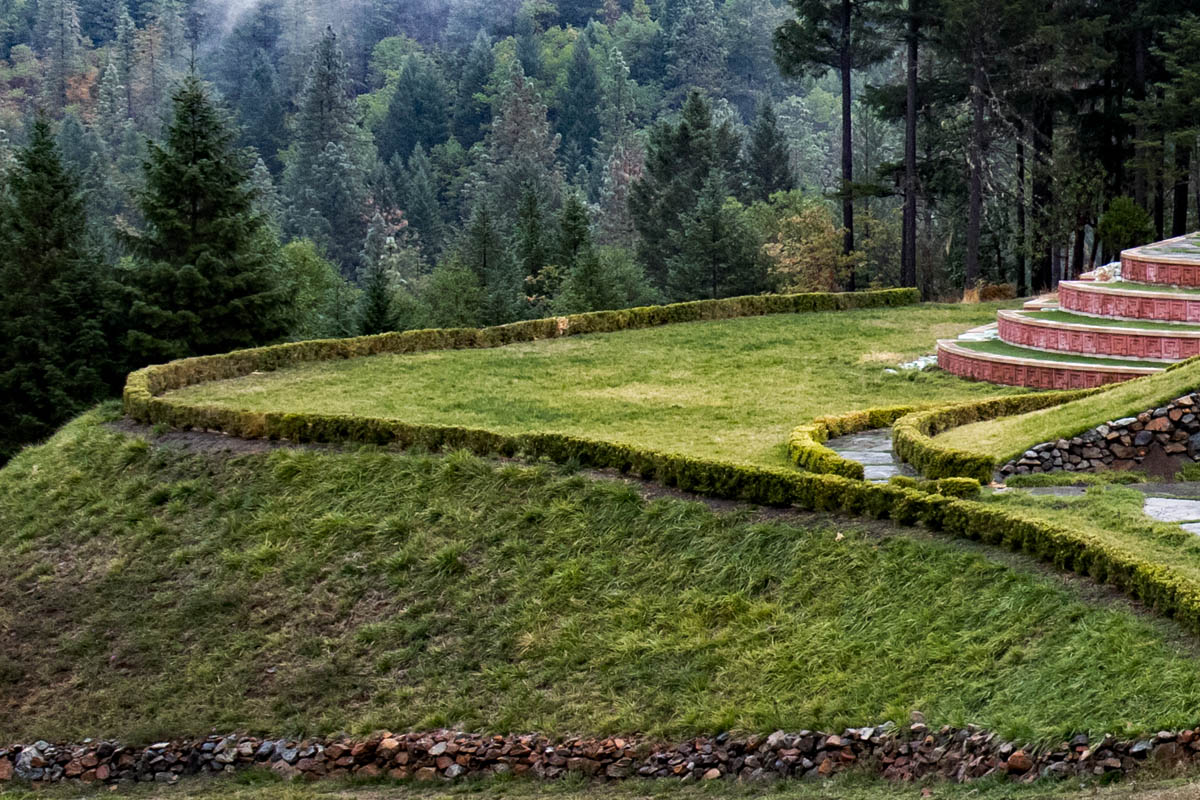
The hedge line is even closer to the view of people who will sit here. With such strong lines around the terrace seating, the hedge matters a lot. When this kind of place is in the country, the forest's naturally irregularity looks fine. But the transition from forest and field needs detail and precision when hedges are involved.
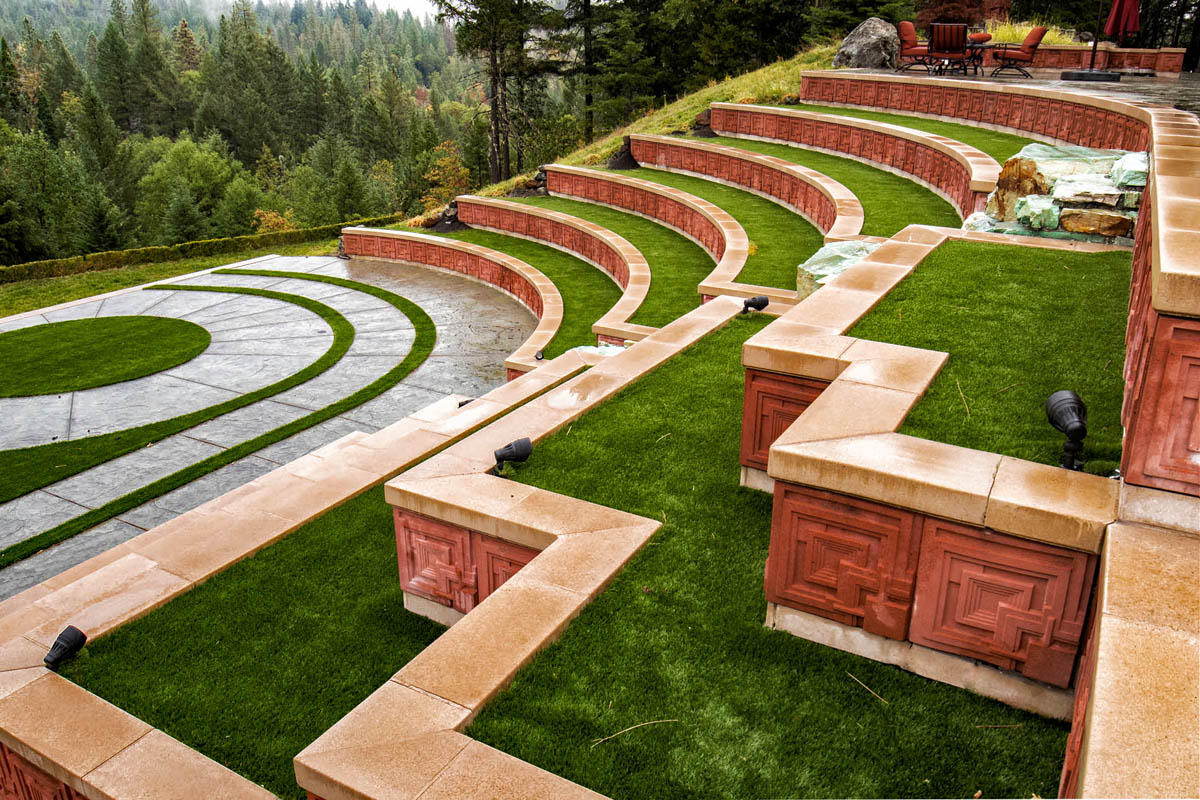
On the opposite side is a pool, patios and view of more mountains. I used a laser rangefinder here to learn two different things. One was whether the bent twigs could be reached with a long pole pruner and ladder, visible in the lower left showing size and scale among these Italian cypress. The laser rangefinder also helped learn how fast the view will change. The tops of the trees a couple hundred feet in the background are 16 feet to 32 feet below eye level. Growing about 16 inches per year, in 10 - 15 years their tops will be directly horizontal at eye level. This how the laser can help plan for future thinning of hillside trees.
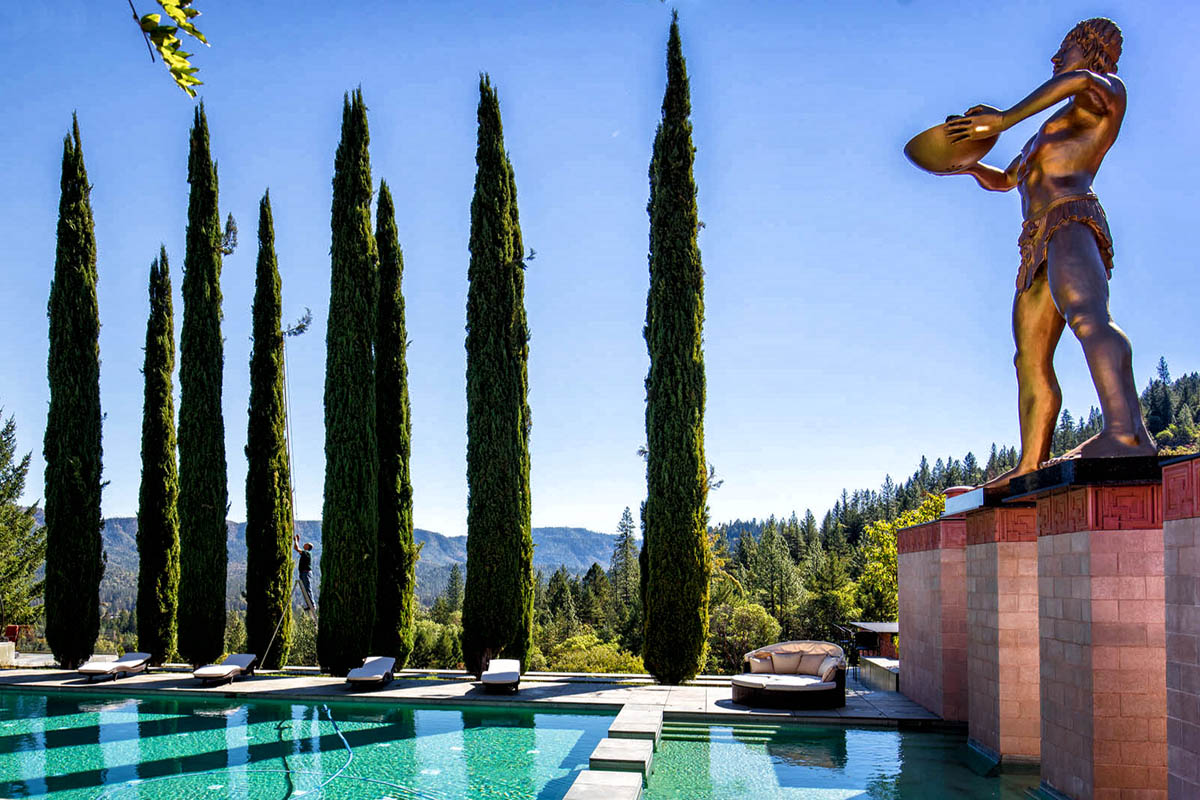
The other end of the pool area has two Sphinx, one in both corners, enclosed by boxwood (there are 4 Sphinx altogether on the property). This corner also has Wisteria with house windows hidden behind the draping vines.
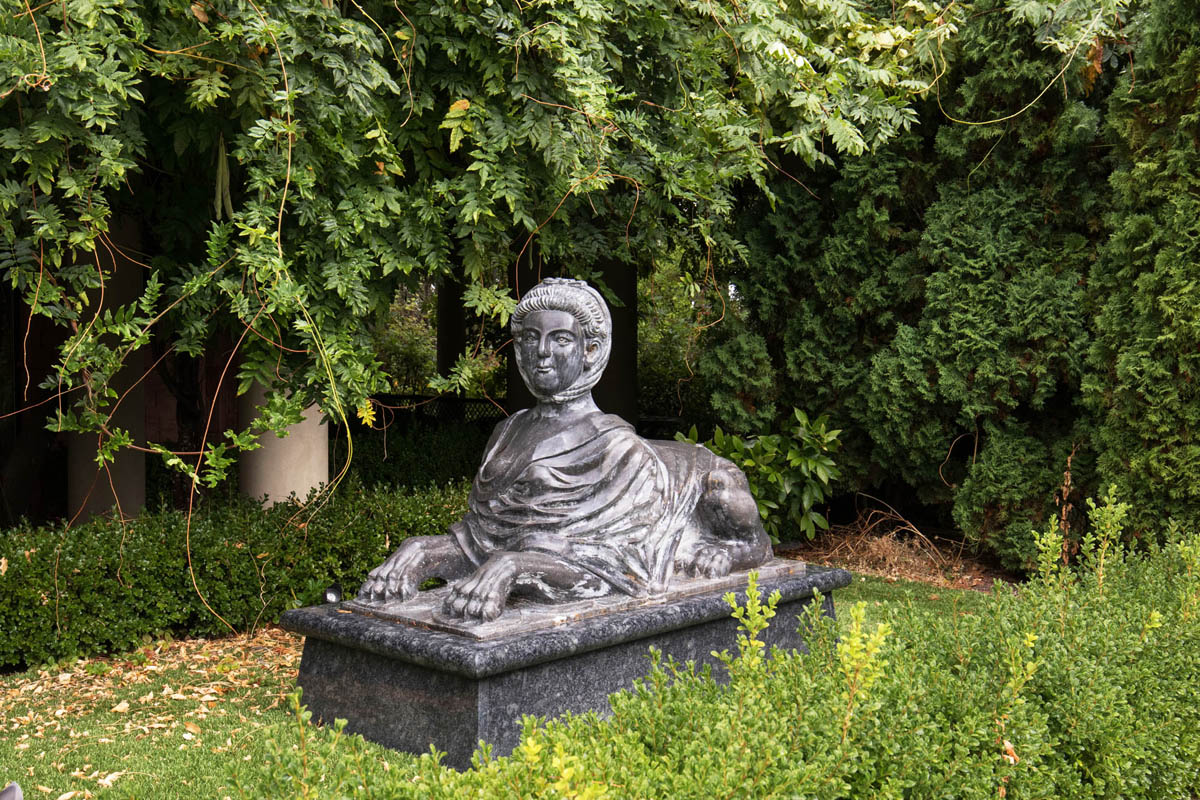
This is the same one after pruning. I tried something different, dipping the hedge contour lower on the side most visible to residents and guests using the pool. Showing more of the Sphinx base from a distance seemed to look better. The sky and mountain reflection in the photo implies the light and view opened to this side of the house. The vine was left a little lower than the entryway to reduce heat on this sunset side of the house.
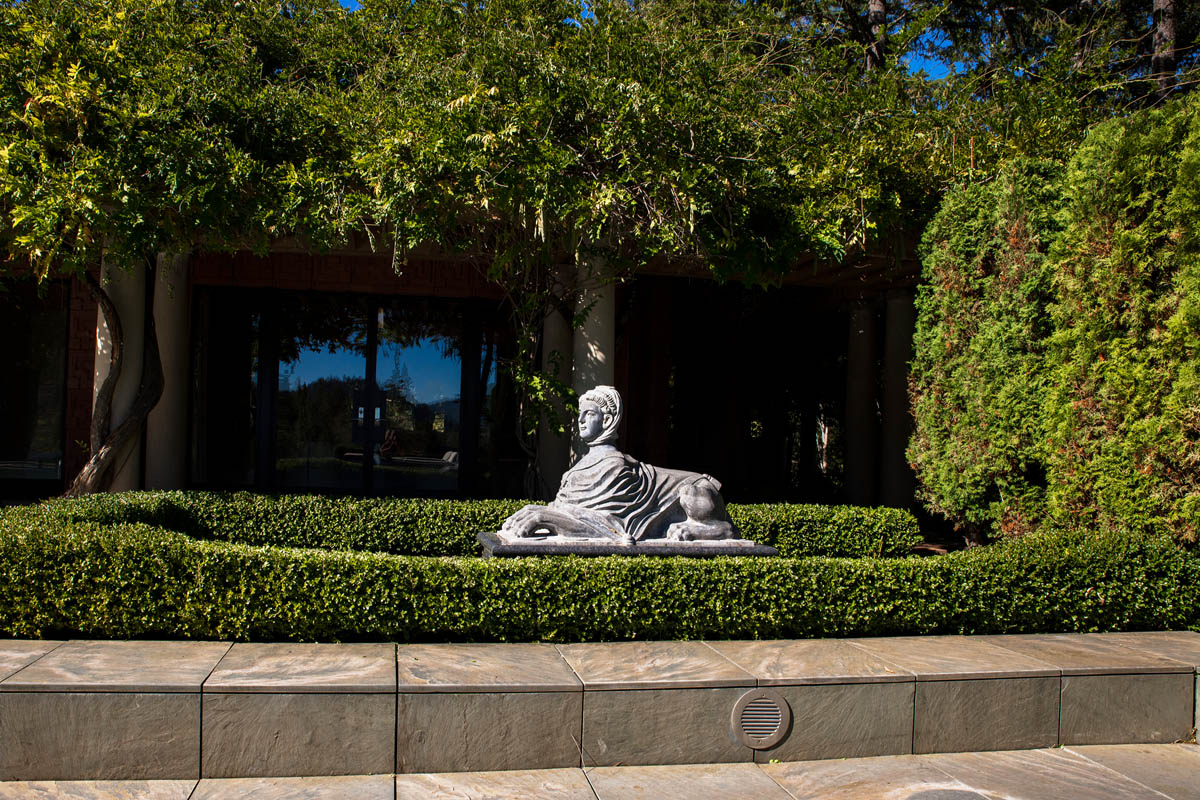
This is an old brick walkway the homeowner wants to preserve for nostalgia and leave as-is. It is about the only thing that was not changed, modified or updated. For some reason the Italian cypress, planted years later, look a bit ragged and not just due to snow. The next photo following shows the shape reconfiguration.
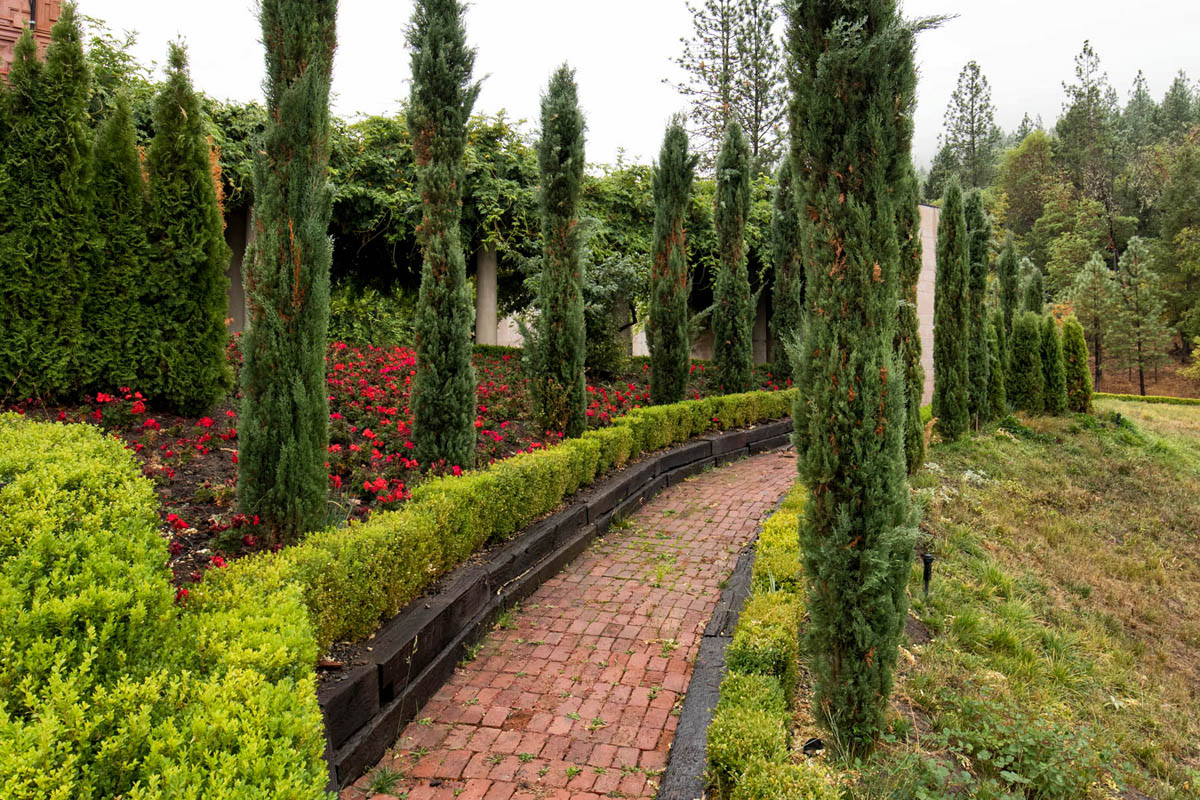
This photo was taken 5 days after the one above. The arch idea was the homeowner's request. I used to do a lot more of this kind of thing back in the 1980s and veered away from it due to the greater hours needed each year due to shaping. But for this specific group I think it was a reasonalble alternative. Due to the slope and need for ladders while shearing, the size will need to be constrained to this here. With new growth and one more year, these will look even better. This is only one single day of change.
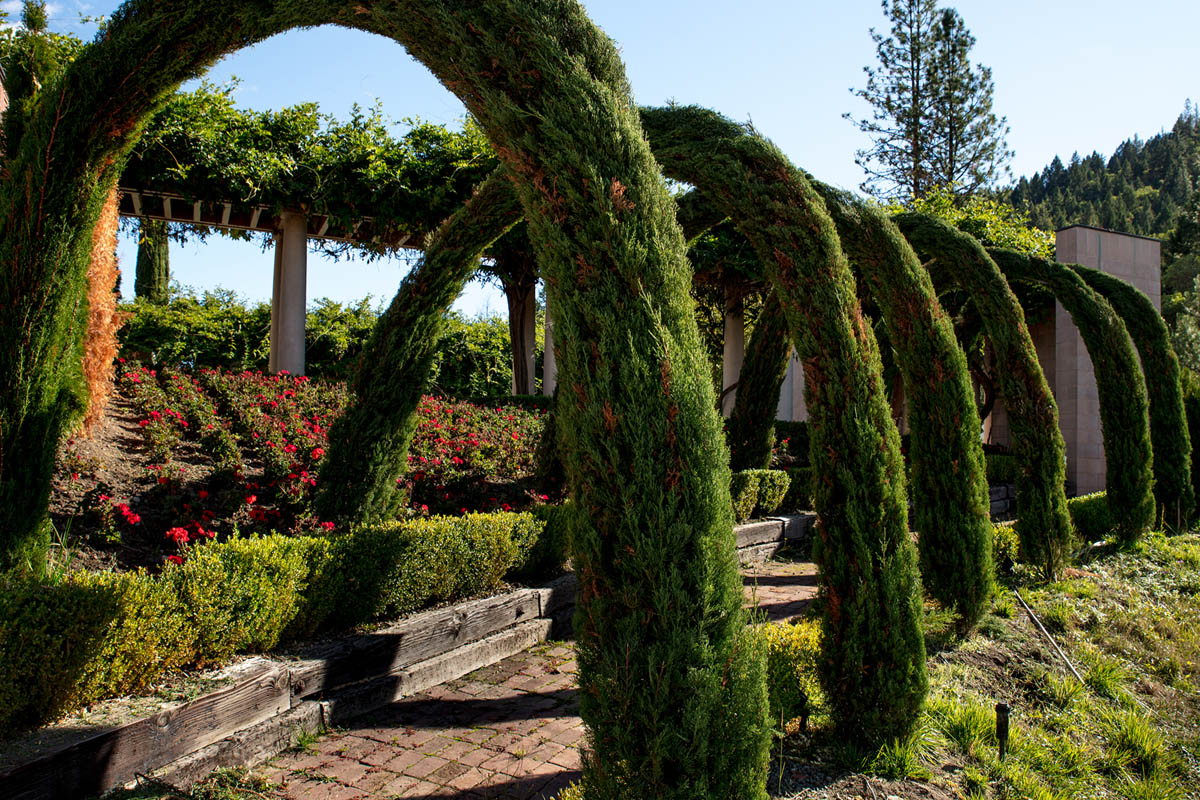
The top and front of this arborvitae hedge are straightforward for what was needed from this side. Shear the top and shear the front.
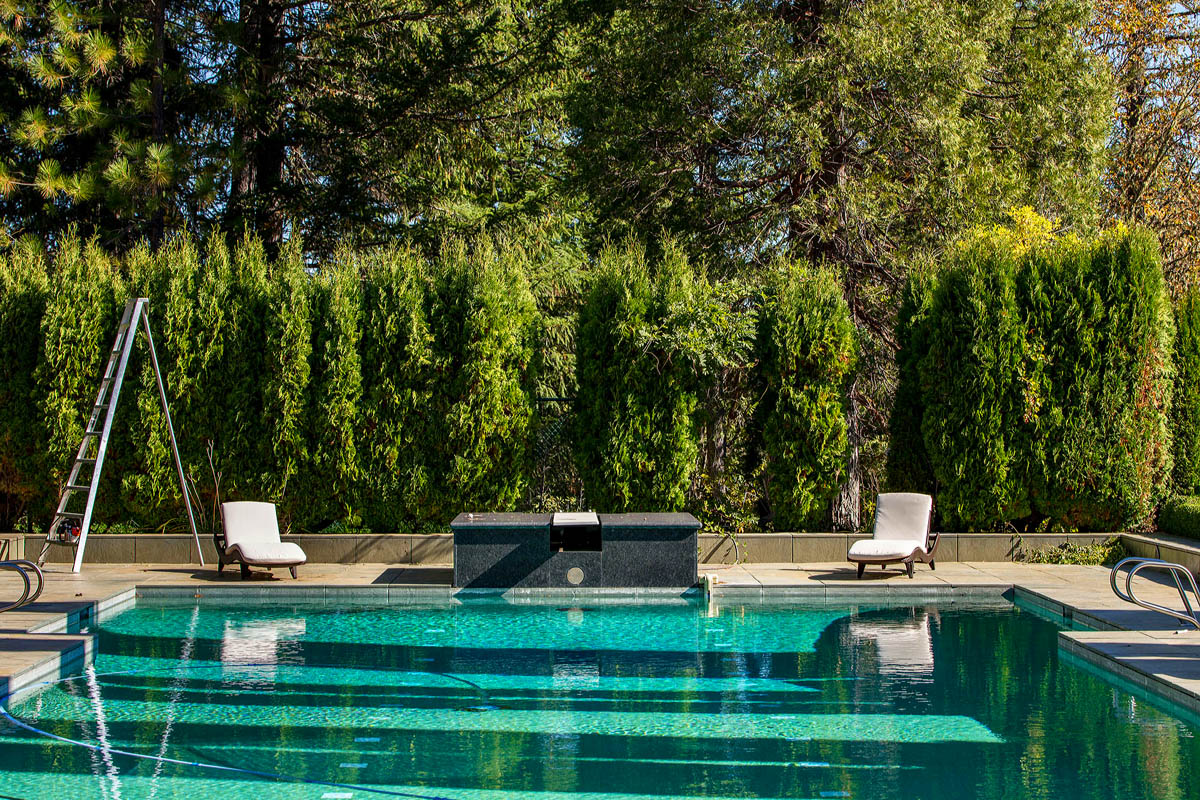
The part that was not straightforward can't be seen. The hedge was getting too wide (deep) and the inside looked like decades of severe topping with more dead than living. So I pruned-away the entire back side of this hedge because it faces the forest, and out of view. The thinner depth simplies future shearing and allows placing a ladder front or back. Planting new arborvitae to fill the gaps will be easier with more room to dig. The inside is now 99% clean of flammable deadwood and dried foliage. The extra space also makes irrigation changes easier.
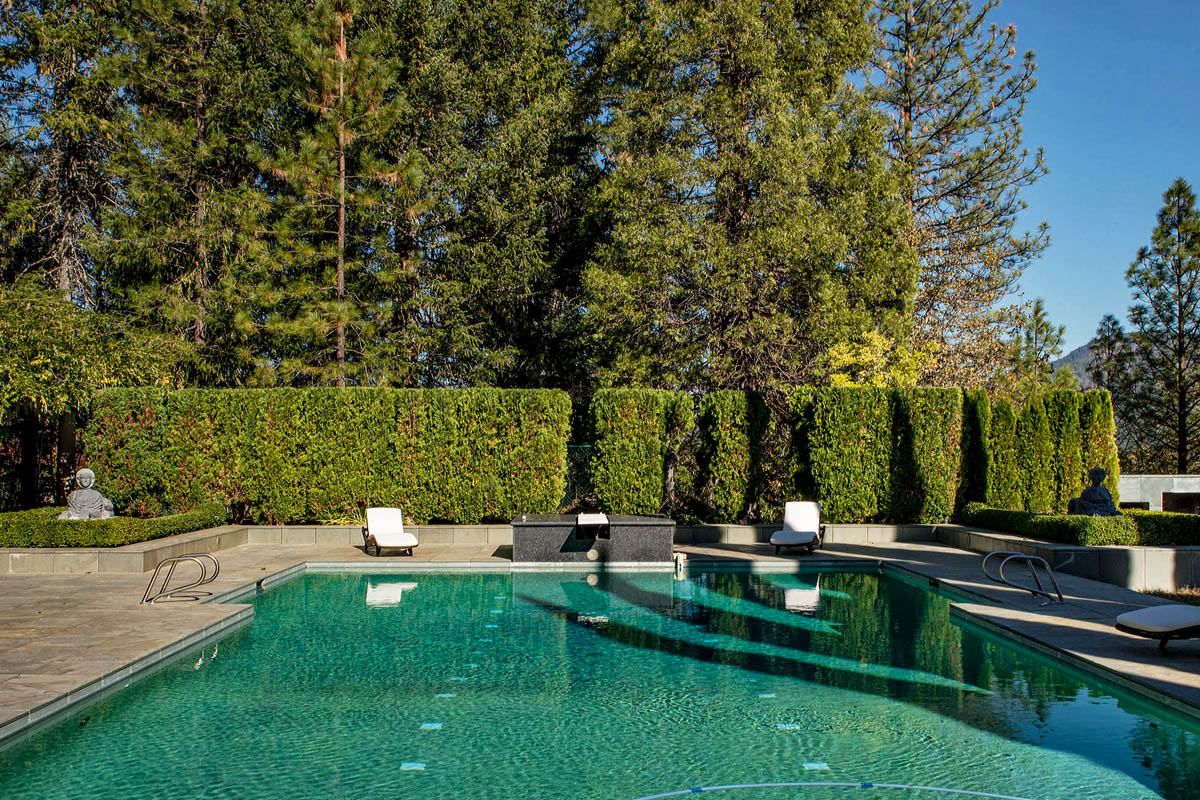
At a glance, all this soft foliage may look comfortable and inviting, but the excess growth is causing several difficulties. The patio side foliage of the hedge in the background is dying from lack of light. The vines started growing into the wall tiles, block light light to windows, and covering a glass rail around the rooftop patio.
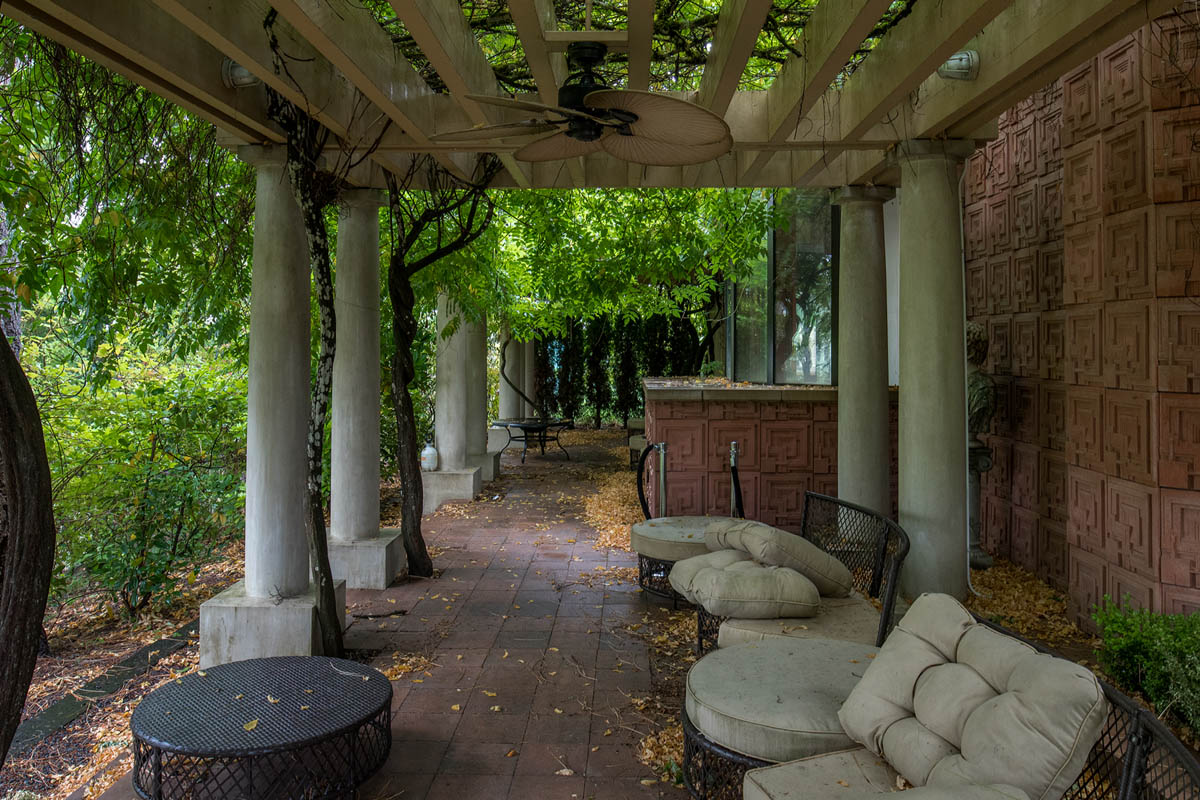
Same area after some moderate trimming. Wisteria is high maintenance, but few plants provide this kind of overhead cover.
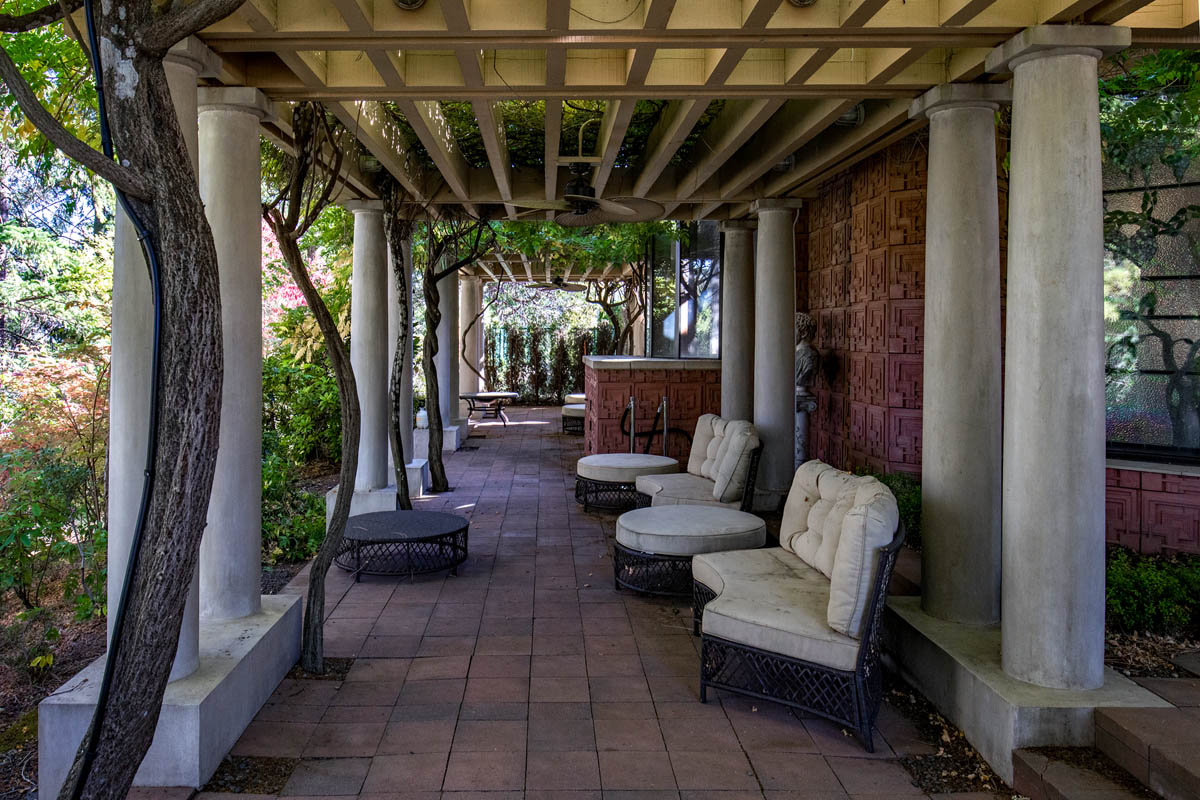
These large Manzanita are close to the pool area where the natural area meets the landscaping. This is before pruning when the structures were still loaded with plenty of deadwood.
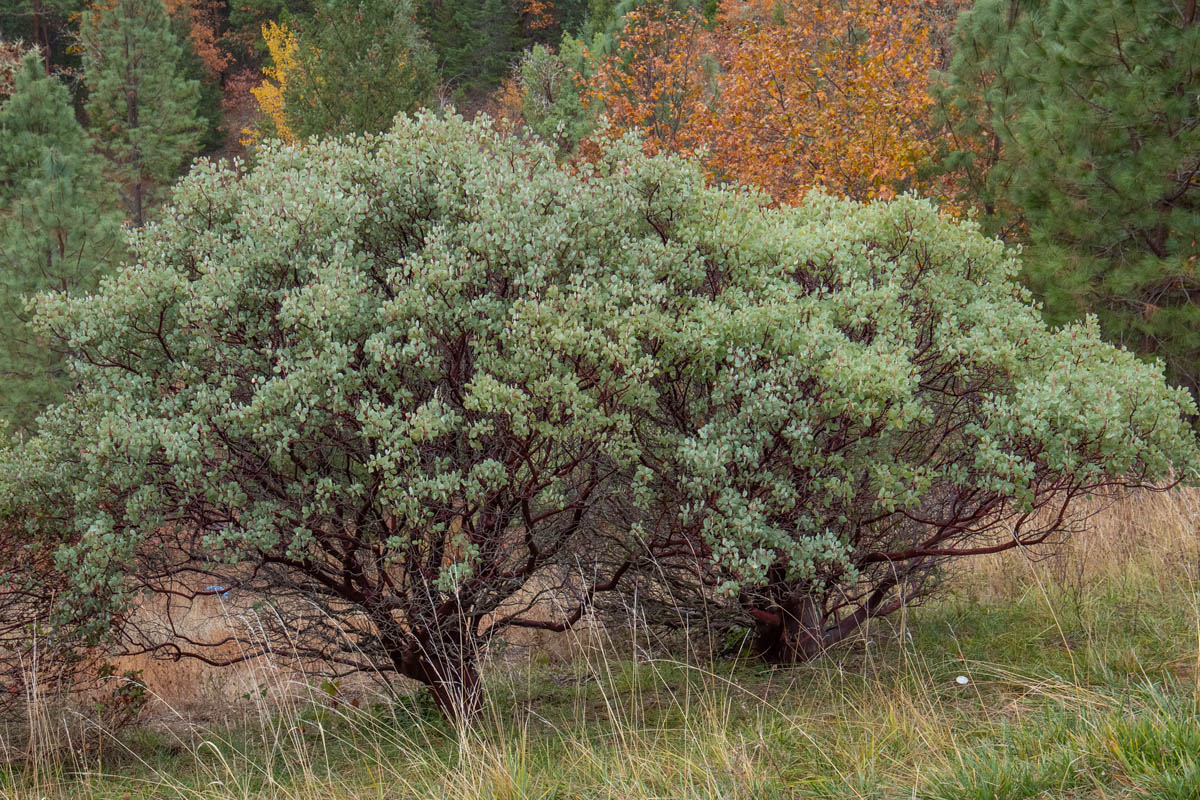
Some light pruning allows these plants to enhance the transition between the house landscaping and natural area. The lower canopies were pruned more manicured but the upper half was left natural retaining some of the smaller dead twigs. This was a cloudy day, but when sun shines, the bark can look even more amazing. The bark is smooth like Madrone which also grows in the area. But Manzanita bark is darker red or maroon.
